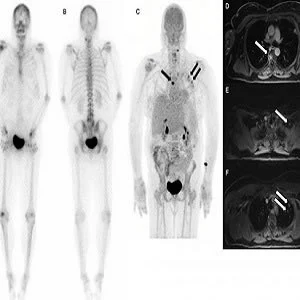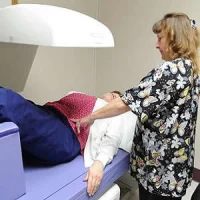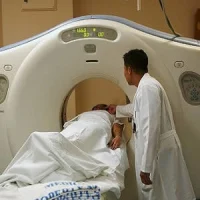New research presented at the 2017 Annual Meeting of the Society of Nuclear Medicine and Molecular Imaging (SNMMI) shows that simultaneous injections of flourine-18 fluorodeoxyglucose (18F-FDG) and 18F-sodium fluoride (18F-NaF) followed by quantitative scanning significantly improves image quality and detection of bone metastases at a lower dose.
Andrei Iagaru, MD, associate professor of radiology and division chief, Nuclear Medicine and Molecular Imaging, Stanford University School of Medicine in Stanford, California explains that in some patients with breast and prostate cancer, a single PET/MR exam can not only reduce radiation but also provide accurate information. This is convenient for patients and less costly overall.
Dual-agent PET/MR with time of flight approximates the position photons created as radioactive agents decay. This results in a much finer quality of images.
The study enrolled 55 cancer patients (39 men with prostate cancer and 17 women with breast cancer) who were in line for a conventional bone scan. Study participants received simultaneous injections of the imaging agent 18F NaF. After that, they underwent PET/MRI scans. Results were compared with conventional technetium 99m-methyl diphosphonate (99mTc MDP) bone scintigraphy.
Findings showed improved detection of prostate and breast cancer with dual-agent PET/MR. Bone metastases was pointed out in 22 patients who were also found positive with conventional base scan. However, PET/MR detected bone metastases in 14 patients as compared to conventional bone scan.
Researches thus conclude that PET/MR successfully detected greater extent of metastases while reducing the required radiation dose from the injected agents.
Source: Society of Nuclear Medicine
Image Credit:
References:
Sonnia, Ida et al. (2017) Imaging Patients with Breast and Prostate Cancers Using Combined 18F NaF/18F FDG and TOF simultaneous PET/ MRI. The Journal of Nuclear Medicine.
Latest Articles
Cancer, radiation exposure, Dual-agent PET/MR, bone metastases
New research presented at the 2017 Annaul Meeting of the Society of Nuclear Medicine and Molecular Imaging (SNMMI) shows that simultaneous injections of flourine-18 fluorodeoxyglucose (18F-FDG) and 18F-sodium fluoride (18F-NaF) followed by quantitative sc










